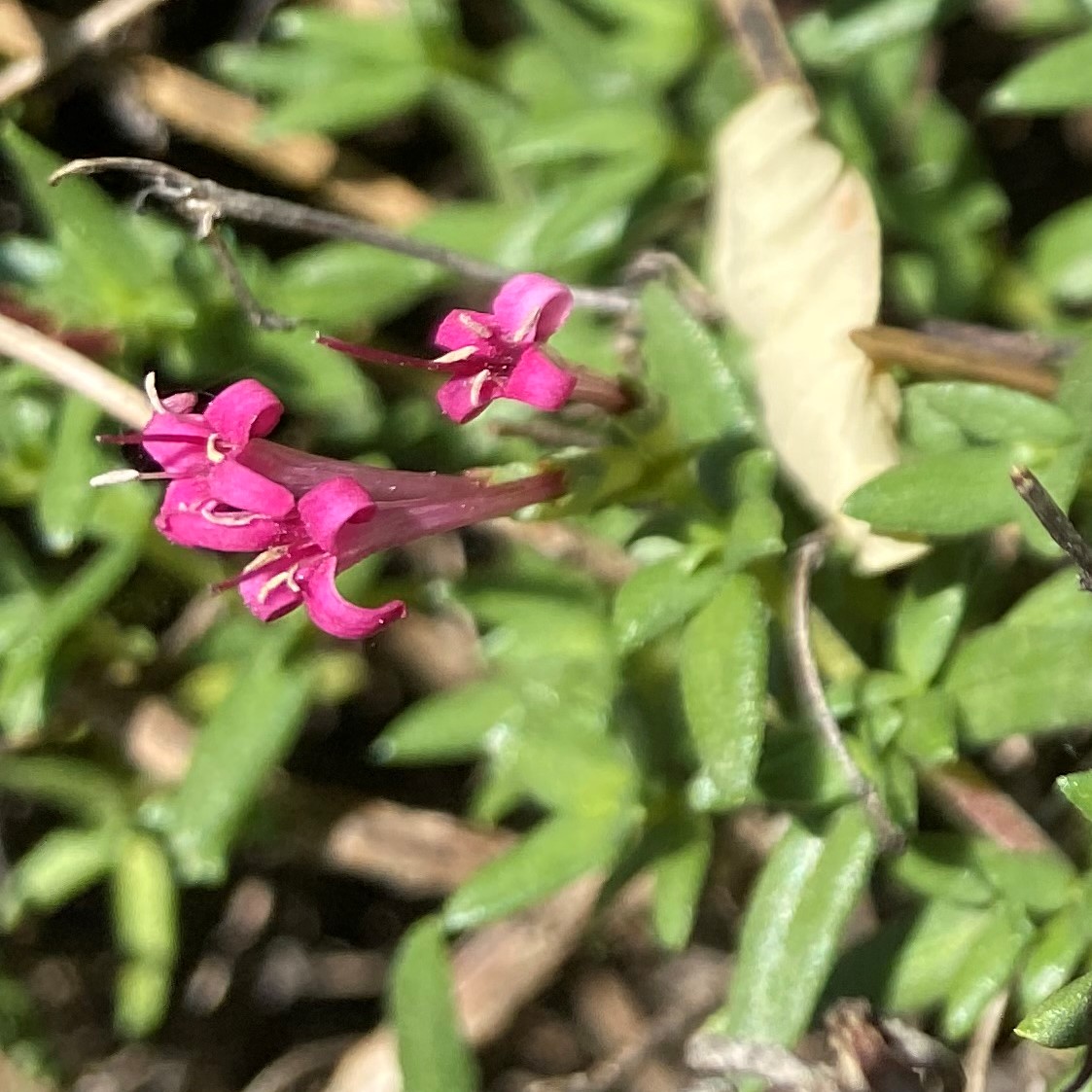Πλόκαμος της καλαβρίας
Etymology of Plocama calabrica: The genus's name Latinized female "Plocama" derives from the Ancient Greek "πλόκαμος" [plókamos] in male form, which means "braid, knitting, reticular mesh", most likely referring to the branching of its stems. "Calabrica" refers to the Italian region of Calabria, possibly the region it was initially recorded.
There is one and only Plocama species in the Cypriot habitat and that is Plocama calabrica.
Plocama calabrica is a low-spreading shrub with sprawling stems, heavily branched, growing (in Cyprus) in the Troodos Mountains Range and the Akamas region. Calabrica bears tiny tubular flowers of four petals in pink shades, which in time produce tiny red/black edible berries. It is encountered at an altitude between 450–1525 metres and it primarily grows on limestone slopes and rocky slopes. It is heat and drought-tolerant. Plocama calabrica's flowering period in Cyprus is between May and August.
Plocama calabrica was previously also named Asperula calabrica (1782) and Putoria calabrica (1830).
The plant was useful to the Cypriots of previous centuries during Easter: A red dye was ecstracted following the boiling of its root and it was useful for the dying of the eggs red. The same custom had been observed in neighbouring Greece.




